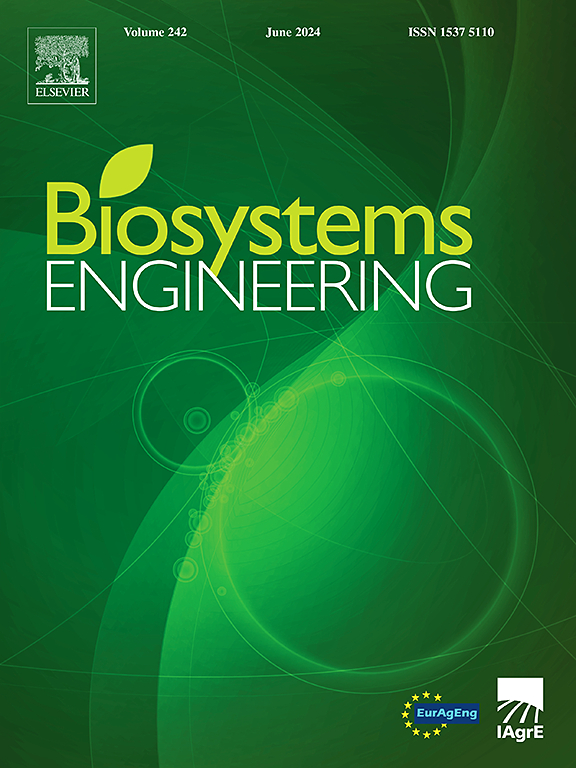Distribution law of vascular bundle stiffness in rice stems and microscale simulation
IF 4.4
1区 农林科学
Q1 AGRICULTURAL ENGINEERING
引用次数: 0
Abstract
Uncertainty regarding the distribution law of vascular bundle stiffness and its influencing factors in rice stems has led to difficulties in optimising the working parameters of rice transplanters and in breeding rice varieties with strong lodging resistance. In this study, the stiffness distribution law of large vascular bundles at different locations and their influencing factors were comprehensively analysed through vascular bundle tensile mechanical tests. Throughout the stem, the stiffness of large vascular bundles gradually decreased from the base to the top. Within each stem segment, the stiffness of large vascular bundles decreased progressively from the outer leaf sheath toward the inner layers. The average stiffness of large vascular bundles in the bottom stem segment was the largest, reaching 6.4 ± 0.49 × 10−2 MPa. Based on the working standards for rice seedling transplanters, the most suitable parameters for paddy field preparation and transplanting depth were determined as follows: soaking field water depth of 4–5 cm, soaking time of 1–3 days, mud field settling of 1–3 days, and rice transplanting depth of 3 cm. Through the fitting analysis of the stiffness of large vascular bundles and their structural parameters, the primary factors influencing vascular bundle stiffness were identified as the cross-sectional area of the vascular bundle and the area of the vascular bundle sheath. Ultimately, a biomechanical model of rice stalk large vascular bundles containing realistic microstructural features and non-homogeneous material properties was established, and the simulation results showed a significant positive correlation with the experimental results (R = 0.99, P < 0.01, R2 = 0.99). This biomechanical model provides a foundation for the subsequent construction of a coupled multi-physical field model of the rice stalk mechanism–water field environment, including micro-organisms, and for exploring interaction mechanisms at the micro-scale during rice transplantation.
求助全文
约1分钟内获得全文
求助全文
来源期刊

Biosystems Engineering
农林科学-农业工程
CiteScore
10.60
自引率
7.80%
发文量
239
审稿时长
53 days
期刊介绍:
Biosystems Engineering publishes research in engineering and the physical sciences that represent advances in understanding or modelling of the performance of biological systems for sustainable developments in land use and the environment, agriculture and amenity, bioproduction processes and the food chain. The subject matter of the journal reflects the wide range and interdisciplinary nature of research in engineering for biological systems.
 求助内容:
求助内容: 应助结果提醒方式:
应助结果提醒方式:


